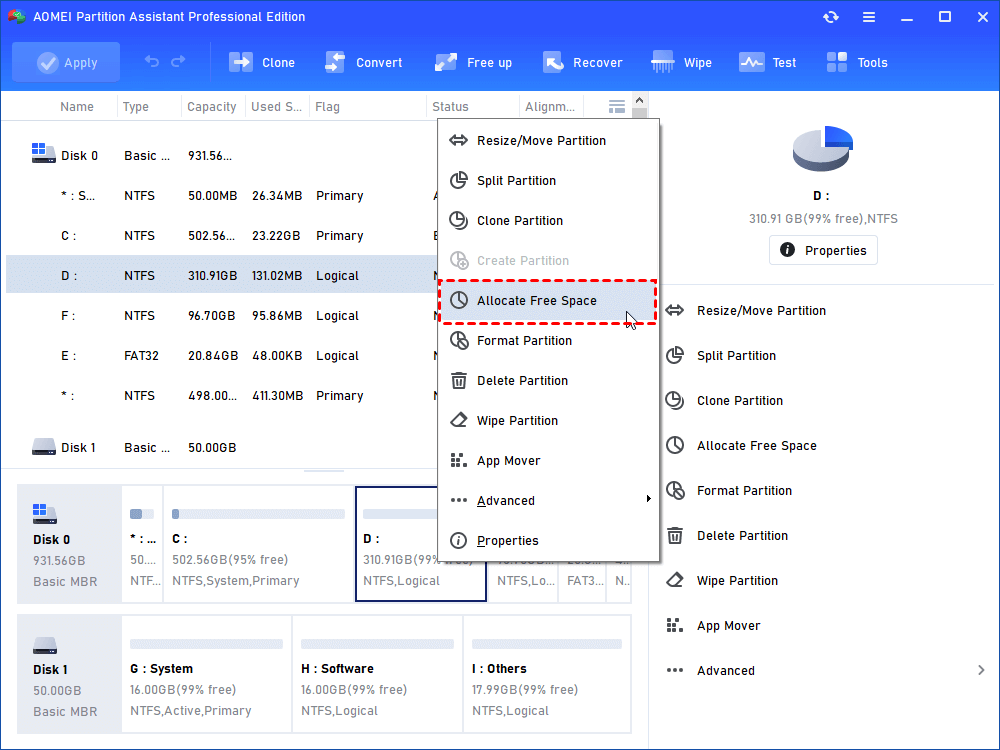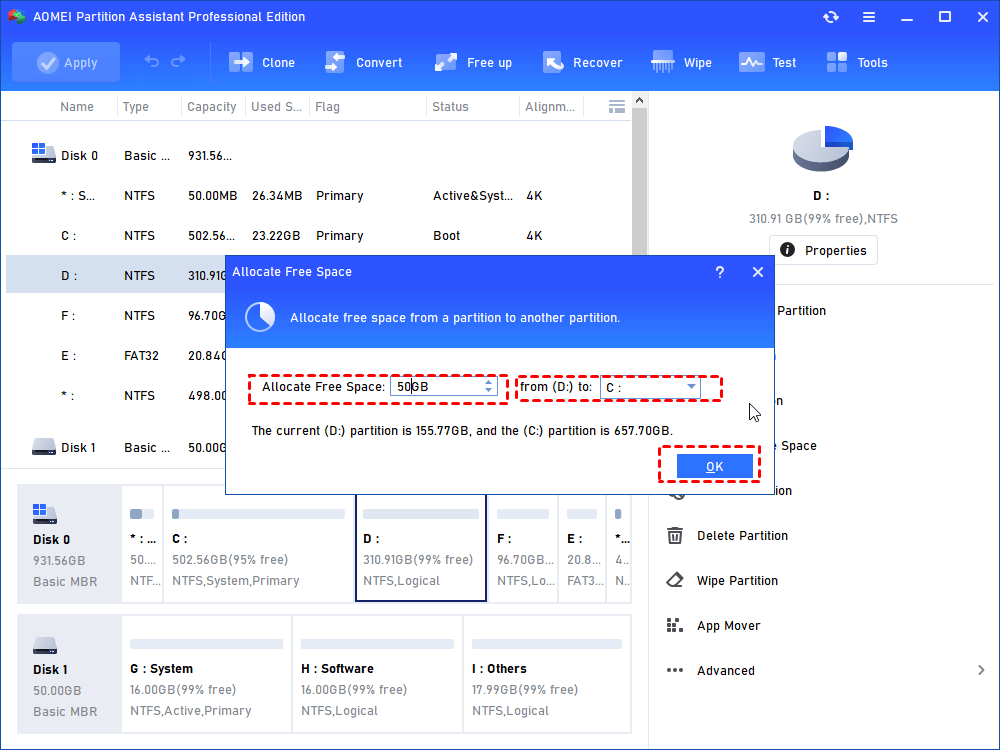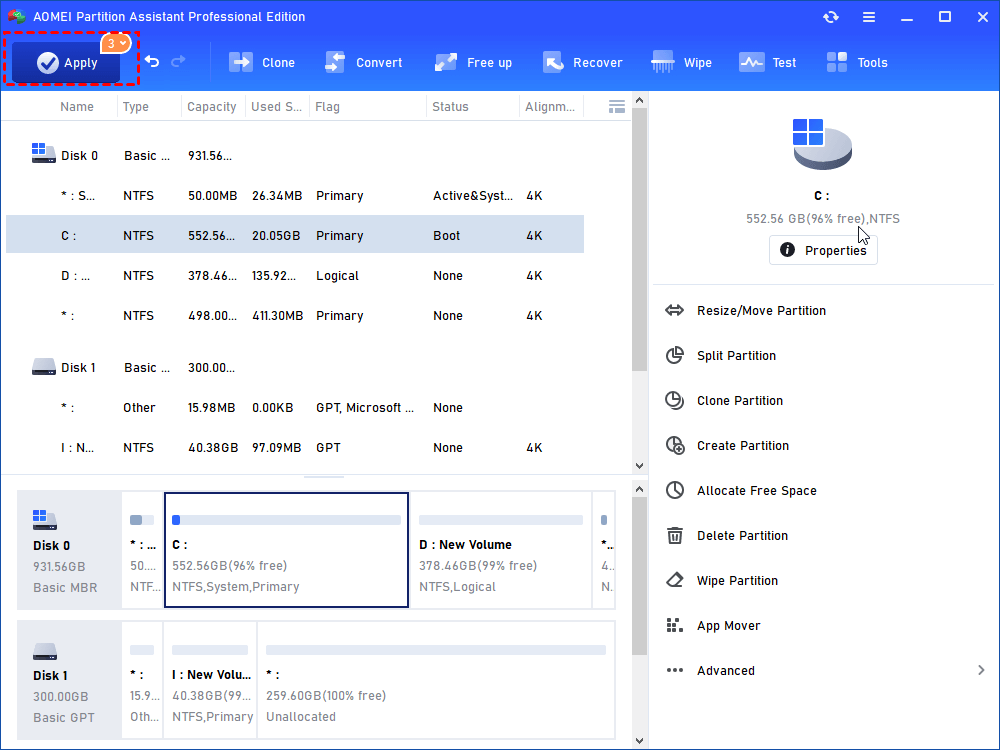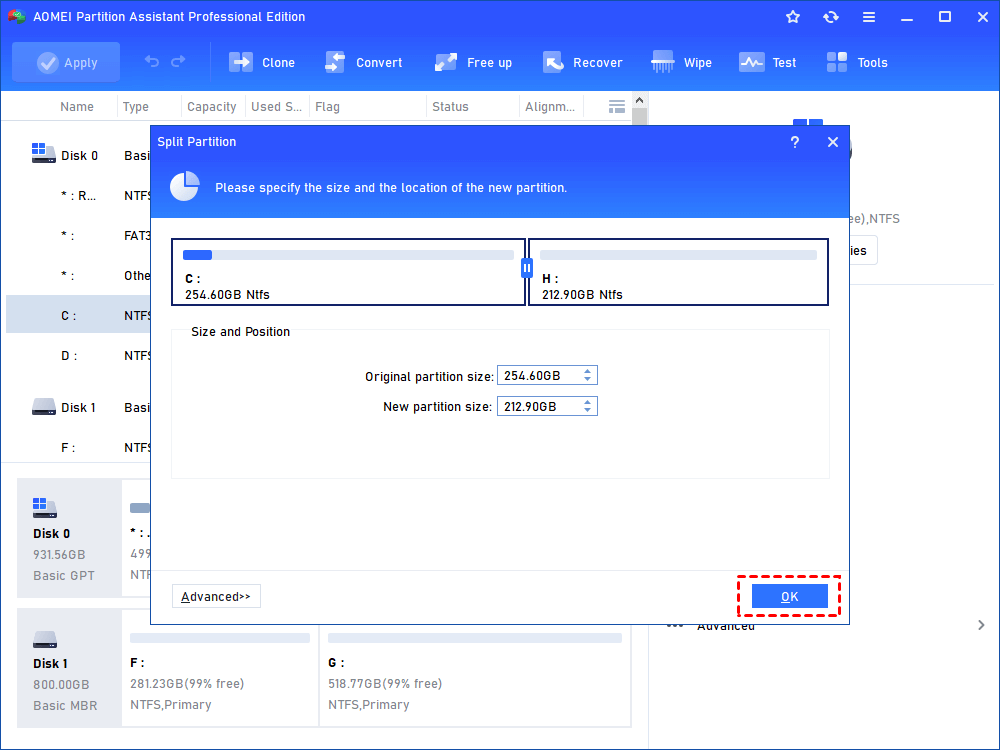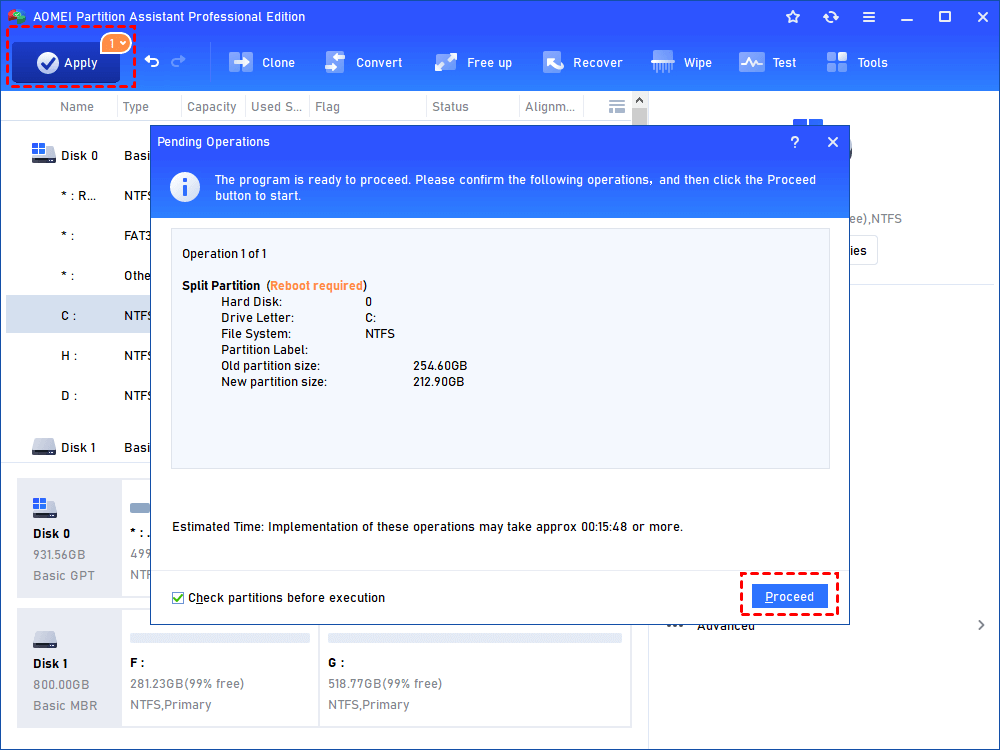How to Repartition Hard Drive in Windows 10 without Losing Data?
Whether you want to repartition hard drive for increasing partition number or changing partition size in Windows 10/8/7, you can find easy solutions in this post.
When need to repartition hard drive in Windows 10?
Hard drive, a kind of storage device, allows you to install OS and save apps, photos, music files, etc. You may need to repartition your hard drive in Windows 10 for creating more partitions or increasing the capacity of system partition or other partitions. Examples are as follows:
✎ Example 1: “I have bought a new laptop with Windows 10 pre-installed. The laptop hard drive has only partition C with 500GB capacity. Now, I want to repartition it with 200GB. However, there is only 56GB for me to shrink even it has 300GB unused space. Can I repartition the hard drive as expected without formatting it?”
✎ Example 2: “My hard drive has been divided into three parts and C drive holds Windows 10 OS. Now, I want to increase the partition capacity of partition C as it is nearly full. However, there is no unallocated space behind it and I don’t want to delete partition D to obtain such unallocated space for extending C drive. Is there a way for me to repartition my hard drive without deleting partition and losing data?”
A professional & reliable partition software for Windows 10
As aforementioned, within Disk Management, it is possible that you can’t shrink partition as you expected; you cannot extend partition when there is no unallocated space contiguously behind it.
Thus, here introduces an overall & powerful partition software, AOMEI Partition Assistant Professional (PA Pro) for you to repartition hard drive in Windows 10 without formatting and losing data. You can use its different functions to adjust partition size flexibly and conveniently under various situations:
✔ Split Partition: split one large partition into two small partitions to sort out files. It is very helpful when your hard drive only one partition and you want to have more partitions on it.
✔ Allocate Free Space: directly allocating unused space from one partition to another without formatting. It can be useful if there is one partition with much free space and one partition is full.
✔ Merge Partitions: add adjacent/ non-adjacent unallocated space into partition or merge two adjacent partitions into one without losing data. You can use this function if there is unallocated space (non-adjacently behind or before) the partition that you want to extend.
✔ Resize/Move Partition: resize FAT32/NTFS partition or change the location of the partition.
For more functions of this partition software, refer to AOMEI Partition Assistant Features. It can work smoothly under Windows 10/8.1/8/7, XP, and Vista. If you need to repartition hard drive in Windows Server 2019/2016/2012 (R2)/2008 (R2)/2003, you can employ AOMEI Partition Assistant Server.
Only 3 steps to repartition hard drive in Windows 10 [without data loss]
The following content is mainly about how to repartition internal/ external hard drive for increasing partition size (if the hard drive has no unallocated space) and creating more partitions easily in Windows 10/8/7.
Note: You can download the demo version of PA Pro to have a try! What you should know is the demo version only allows you to preview all functions and simulate all operations.
→ Part 1. Extend partition by allocating free space directly
Taking allocating free space from D drive to C drive in Windows 10 as an example.
Step 1. Run and launch the software. In the main interface, right-click D drive and choose “Allocate Free Space”.
Step 2. Specify how much space you want to allocate from D drive and choose C drive as the target partition.
Step 3. You can preview that C drive will be extended and D drive will be shrunk. After confirmation, click “Apply” and “Proceed” to commit the operation.
- Notes
- This operation may change the original location of your data but won’t delete them.
- The two partitions involved in this operation should be on the same hard drive.
→ Part 2. Split one large partition into two small partitions
Taking splitting partition C into two partitions in Windows 10 as an example.
Step 1. Install and run the software. Right-click C drive and choose “Split Partition”.
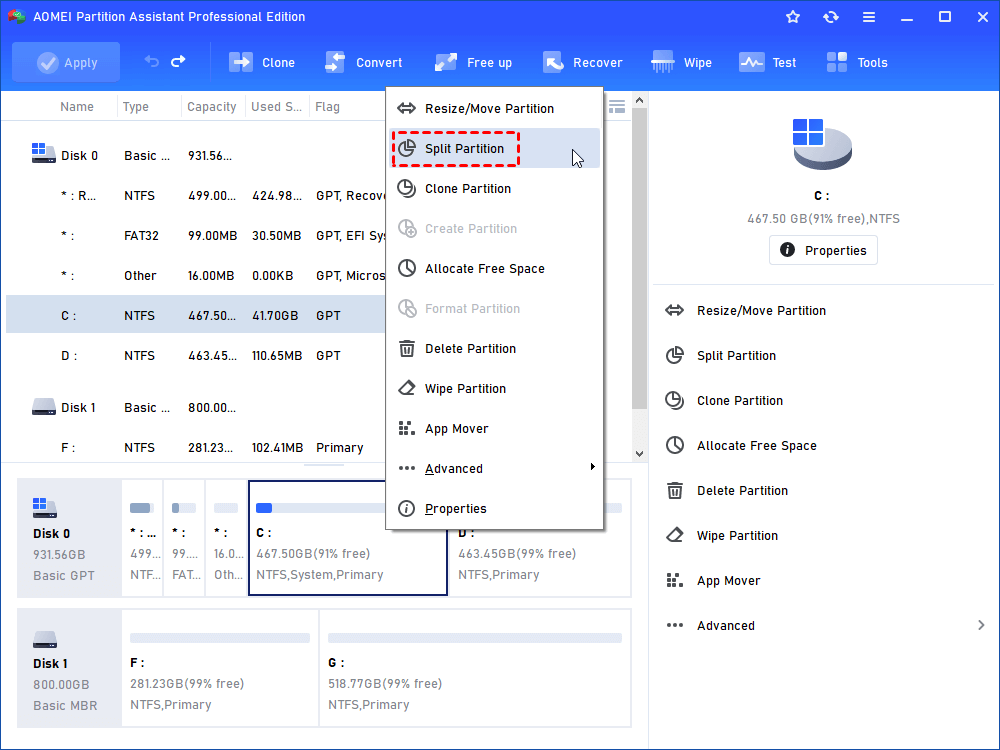
Step 2. In this window, set the size and location of the new partition. Then, click “OK”.
Step 3. Click “Apply” and “Proceed” execute the operation.
- Notes:
- Only the partition that has unused space can be split into two partitions. Thus, you should confirm that there is free space on the partition that you want to split.
- If you try to split one primary partition into two on an MBR disk that already has four primary partitions, the split partition will be converted to logical partition automatically.
- When there are four primary partitions on an MBR hard disk, this software won’t allow you to split system partition or boot partition, unless you convert one of the other partitions into logical.
